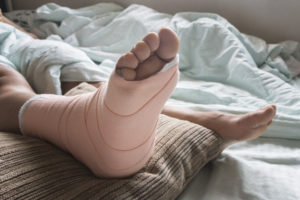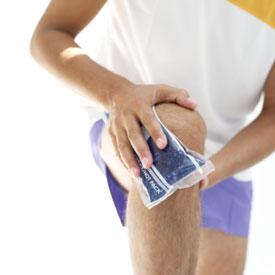Knee Injuries That May Require Treatment
A knee doctor serving Pottstown, PA, can play a crucial role in diagnosing, treating, and recovering from injuries that affect the knee. The knee is a hinge joint that is particularly vulnerable to injuries and chronic pain. Sometimes a person may not even be aware that they are injured until later on. The knee is an intricate joint with ligaments and tendons that are necessary to make it function properly. Several injuries can happen that may require treatment from a professional at Premier Osteoarthritis Centers of Pennsylvania. Knee pain can have a profound impact on a person’s overall quality of life, and, at times, it can change the way a person can function daily. Making sense of your injury can be challenging as there may have been several reasons for the knee pain. Our practice is dedicated to helping get to the root of the problem so that we can gain a better understanding of your injuries and the proper course of action.
Knee Injuries That May Require Treatment
Typically when a person injures a part of their body, or even breaks a bone, they are aware that something isn’t right. Much of the time, those injured are likely to seek treatment for these injuries. In cases involving the knee, while there may be pain, those experiencing pain may not realize that their knee pain results from a severe knee problem that will require treatment. Common knee problems that cause pain and will require treatment include:
- Patellar (Kneecap) Fractures
- Distal Femur Fracture
- Proximal Tibia Fracture
- Patellar Dislocation
- ACL Injury
- Torn Meniscus
- Torn Tendons
- +More
The Impact of Knee Pain
Knee pain can significantly impact the life a person lives. In some situations, knee injuries resulting from pain can render even the most active of people physically limited. Know that chronic knee pain may be a sign that there is a more significant problem. If you experience any of the following, you must speak with a Pottstown, Pennsylvania knee doctor as soon as possible:
- Trouble walking
- Difficulty moving the knee
- Pain that lasts more than 48 hours
- You are having difficulty bearing any weight
- You are unable to sleep because of the pain
- Your everyday activities are impacted
Seeking a physician is critical because, without treatment, further issues may arise. Failing to take action could result in not just pain but even permanent damage. Typically living with such significant knee pain is something no one wants to experience, and treatment will be imperative.
Knee pain can impact nearly every aspect of your life. Fortunately, you can take action to end your knee pain with highly specialized treatments offered at Premier Osteoarthritis Centers of Pennsylvania. While surgery may feel like the only option, it’s essential to start with non-surgical, non-invasive therapies to manage pain and ultimately heal the affected area. Procedures offered by professionals at our practice can help you get back on your feet in no time. Learn more about how we can help you by contacting our Pottstown, PA, knee doctor.

 f you’ve never been to an orthopedic surgeon before, or you’ve never needed their services, then you are going to have some questions about what they do. So let’s talk about some of the frequently asked questions by patients that might satiate your curiosity too. A good orthopedic knee doctor in Pottstown, PA is going to be able to answer any and all questions that you have regarding your knee surgery.
f you’ve never been to an orthopedic surgeon before, or you’ve never needed their services, then you are going to have some questions about what they do. So let’s talk about some of the frequently asked questions by patients that might satiate your curiosity too. A good orthopedic knee doctor in Pottstown, PA is going to be able to answer any and all questions that you have regarding your knee surgery.

